11 Nights / 12 Days

Blessed With Some Of The Most Spectacular And Beautiful Landscapes Anywhere, It Is A Travellers Paradise - Lofty Snow Peaks, Deep Gorges, Lush Green Valleys, Fast Flowing Rivers, Enchanting Mountain Lakes, Flower Becked Meadows, Beautiful Temples And Monasteries Steeped In Time. The Main Attractions Of Himachal Pradesh Include Shimla, Once The 'Summer Capital'Of British India And Now Capital Of Himachal Pradesh; And The Lush Green Kullu Valley Is One Of The Most Beautiful Place On Earth With The Snow-Capped Himalayan Peaks As A Backdrop And The Sparkling Beas River Running Through It.Any Local Guide
Any Adventure Activities
Any Meals Other Than Breakfast
Any Expenses Of Personal Nature
On arrival at Delhi Airport, you will be driven to Shimla for 02 nights stay.
With all its intricacies, history seems to have been the mortar for every brick and stone that has built Shimla. As the summer capital of British India for well over a century it was the seat of one of the most powerful governments in the world. From its cedar-shaded heights, one fifth of the human race was ruled and the decisions made those decades ago affect our lives to the present day.
The town of Shimla rose in the nineteenth century when the Gurkha Wars came to an end in 1815-16 and the victorious British decided to retain certain pockets as military outposts and sanitaria. In 1822 the most rigorous of dandies and the greatest of sticklers for form Captain Charles Pratt Kennedy, Political Agent to the Hill States directed that a house be built for him at the village whose name is variously reported as Sheyamalaya Shumlah, Shimlu and Shemlah. Kennedy House led the vanguard of the hundred-odd houses that were to scatter themselves by 1841 over every level or gently inclining space. Lured by the climate and terrain scores of European invalids began moving to the station and the only stipulation of the local chief who owned the land was that no tree be cut or cattle slaughtered.
In 1864 the Viceroy, John Lawrence anointed Shimla – then spelt Simla, as the summer capital of British India. With Lawrence came the Viceroy Council, the Imperial Secretariat, representatives of the Indian princes and foreign envoys. As the town grew to become the workshop of the Empire, an awed visitor observed, every pigeonhole cradled an embryo of a war or death. Despite the fact that up to the time of Indian independence in 1947, Shimla officially remained only the summer capital, yet the Government spent more time in these hills than at the actual capital Calcutta and later New Delhi. As the bearer of the Viceregal sceptre this tiny pocket became the cynosure of British Empire. Imperial grandeur, and all the panoply and trappings of power came along for the ride. And there was a popular local saying that went, “You cannot sleep the nights in Simla for the sound of grinding axes”. A social whirl of parties, gymkhanas, balls, fancy fairs and affaires du Coeur ensured that a heady mixture of scandal and intrigue constantly wafted through the town.
Overnight stay at Hotel.
After breakfast you will set for half-day sightseeing of Shimla visiting Kufri & Naldhera.
Kufri is a small hill station in Shimla district of Himachal Pradesh state in India. It is located 13 km from the state capital Shimla on the National Highway No.22.The name Kufri is derived from the work "Kufr" meaning a lake in the local language. The highest point in the surrounding region. Kufri has a Himalayan Wild Life Zoo which hosts rare Antelopes, Felines and Birds including Himalayan Monal, the state bird of Himachal Pradesh. During winter a meandering path through the potato plantations turns into a popular Ski track.
Later afternoon visiting Naldehra which is an impressing place stationed 2044 meters above sea level near to Shimla, having the legacy of owning the oldest golf course of India. Naldehra holds the prestige of entertaining many Golf competitions. Naldehra, literally means the Abode of the King of Snakes, possess it main attraction as a temple, Mahunag temple, with main deity as Nag, the Serpant God. The temple is located well inside the majestic Golf Course. The beauty of Naldehra is added by the meandering of the enthralling River Sutlej.
This place is renowned for its natural beauty, many visitors come here and spend their vacations and enjoy the enchanting natural beauty and to relax in a seclude atmosphere. Naldehra offers the rare opportunity of such a paying off, which is never to have any other tourist spots. Colossal deodars, enchanting greenery, huge and amazing mountains, and deep gorges make Naldehra a unique place among the tourist spots. Naldehra is a perfect place for horse riding experiences through its trails and also for nature walks.
Overnight stay at Hotel.
After leisurely breakfast you will be driven to Manali for 02 nights stay.
Just 40 kms away from Kullu to the north, Manali is situated near the end of the valley on the National Highway leading to Leh. The landscape here is breath taking. One sees well-defined snow capped peaks, the Beas river with its clear water meanders through the town. On the other side are deodar and pine trees, tiny fields and fruit orchards. It is an excellent place for a holiday, a favorite resort for trekkers to Lahaul, Spiti, Bara Bhangal (Kangra), and Zanskar ranges. From temples to antiquity, to picturesque sight-seeing spots and adventure activities, Manali is a popular resort for all seasons and for all travellers.
Overnight stay at Hotel.
After breakfast go for half-day sightseeing of Manali visiting Solang Valley & Vashisht Temple.
Solang Nala Valley drives its name from combination of words Solang (Nearby village) and Nullah (water streams from mountains). It is a side valley at the top of the Kullu Valley in Himachal Pradesh, India 14 km northwest of the resort town Manali on the way to Rohtang Pass, and is known for its summer and winter sport conditions. The sports most commonly offered are parachuting, paragliding, skating and zorbing.
Giant slopes of lawn comprise Solang Valley and provide its reputation as a popular ski resort. A few ski agencies offering courses and equipment reside here and operate only during winters. Snow melts during the summer months and skiing is then replaced by zorbing (a giant ball with room for 2 people which is rolled down a 200 meter hill), paragliding, parachuting and horse riding etc.. A ropeway was recently opened.
From here you will be driven to the ancient village of Vashisht. Visit the temples and if you fell like, take a dip in the Hot Sulphur springs. By late afternoon return to Manali either by walk or Jeep / Car.
Rest of the day at leisure & overnight stay at Hotel.
In the morning after breakfast go for a half-day local sightseeing of Manali visiting Hadimba Devi Temple, Club House & Naggar Castle.
Hidimdi Devi Temple, also known as the Hadimdi Temple which identified the female as di in Dimasa Kachari word,Hidimdi Devi is related to Dimasa Kachari living in North East India, who was a son of the soil of Assam,is located in Manāli,a hill station in the State of Himāchal Pradesh in north India.It is an ancient cave temple dedicated to Hidimdi Devi, sister of Hidimba,who was a character in the Indian epic, Mahābhārata.The temple is surrounded by a cedar forest at the foot of the Himālayas. The sanctuary is built over a huge rock cutting out of the ground, which was worshiped as an image of the deity. The structure was built in 1553. The most surprising feature of the temple or what believers could call the most reassuring feature of the temple is the fact that inside the temple the imprint of the feet of the Godess carved on a block of stone are worshipped and if you go to Google Satellite and zoom into the area where the temple is located, you can clearly see the imprint of a giant foot spanning across the valley in the area near the temple. It's thumb starts from where Google shows the Manali Heights hotel to be located and the rest of the foot goes all the way down the slope. Hidamba Mata Ki Jai
Later visit The Club House in Manali is under the management of Himachal Tourism development Corporation, and is located just 1.5 km from the bus stand. Tourists can enjoy various indoor and outdoor sports in the club by taking due permission at the reception along with a nominal fee.
In the afternoon after lunch you have option to visit Nagger Castle which is famous for the enchanting view of the Kullu - Manali valley, the ancient wooden Castle and the Roerich Art Gallery.
Later day free to enjoy on Mall road. Overnight stay at Hotel.
Morning post breakfast you will be driven tioDharamsala for 01 night stay. Arrive Dharamsala and check into your hotel. Dharamsala is a hill station lying on the spur of the Dhauladhar range about 17 kms north- east of Kangra town. This hill station is wooded with oak and conifer trees and snow capped mountains enfold three sides of the town while the valley stretches in front. The snowline is perhaps more easily accessible at Dharamshala than at any other hill resort and it is possible to make a day's trek to a snow-point after an early morning's start. Dharamshala is also the headquarter of the Kangra district.
Rest of the day at leisure. Overnight stay at Hotel.
Post breakfast you can have half-day sightseeing of Dharamsala.
There are many Dharamsala attractions to choose from, but among the top things to do in Dharamshala is a visit to the residence, monastery, and temple of His Holiness the 14th Dalai Lama. The Dalai Lama temple complex, on Temple Road, is just a short walk from the Mcleod Ganj bus stand in upper Dharamsala. The temple complex is open daily, from sunrise to sunset, and visitors are welcome to explore the peaceful ambiance of the surroundings. In the early morning, you are welcome to participate as the monks chant and meditate. You can join local residents for a meditative walk around the temple/monastery complex. Along the way you will see many prayer flags and "mani" stones. Within the Dalai Lama Temple Complex, is Namgyal, personal monastery of His Holiness the Dalai Lama. Everyday from 11:30 AM to 2:00 PM, you can see young Tibetan monks debate in the traditional Tibetan style embellished with hand clapping and emphatic gestures.
Later afternoon you will be driven to Dalhousie for 02 nights stay. Situated in and around five beautiful and densely wooded hills Kathlag, Potreyn, Terah, Bakrota and Bhangora ranging from 1525 meters (5000 ft.) to 2738 mts. (7800 ft.) on the western foot of the Dhauladhar range of the Himalayas, Dalhousie is a popular hill station in Chamba District, Himachal Pradesh. The gorgeous Dalhousie town is much quieter than the other two famous hill stations in Himachal Pradesh (Shimla and Manali). Established in 1854, Dalhousie has one of the most spectacular settings for a hill station, with its snow capped peaks, bracing climate, colourful valleys, old British buildings etc. During peak season, over 700 tourists visit this hill station in a day. Dalhousie was developed on land purchased by the British in1853 from the Raja of the Princely State, Chamba and was made into a sanatorium and hill resort of the British. The settlement was named after the erstwhile Viceroy of India, Lord Dalhousie (1848-56). The hill station is famous not only for its magnificent beauty, but also for the ancient temples, colonial buildings, mall roads, churches and temples of which some of them are now declared as heritage monuments. During the pre-partition days, distinguished personalities like Ravindranath Tagore, Netaji Subhash Chandra Bose and Pandit Jawahar Lal Nehru used to visit Dalhousie. Nehru quotes about Dalhousie as One of the finest hill stations from the beauty point of view, climate and agreeable surroundings. It is not a flashy hill station like some other and there are few amusements there… for my part, I would rather go to Dalhousie than almost any hill station in India, Kashmir apart.
After breakfast you have full-day free to have sightseeing of Dalhousie visiting Subhash Baoli Spring, Panchpula (Five Bridges), Satdhara, Bakrota Hills , Bara Pather & Khajjiar
This saucer shaped grassy meadow at 6400 ft, referred to as the Mini Switzerland of India is 23 km from Dalhousie towards Chamba. It was Mr. Willy. T. Blazer, Vice Counselor and Head of Chancery of Switzerland in India who brought Khajjiar on the World tourism map by christening it as 'Mini Switzerland' in 1992. Surrounded by dense deodar forests, Khajjiar has a small lake in the center and on it are two floating islands, sometimes hidden from view by the tall grass that grows on them. Known as one of the most charming spots in the Himalayas, Khajjiar derives its name from the ancient, golden domed Nag Temple of Khajinag (12th Cent. AD) located near the lake. The sanctum of the shrine is carved in wood and there are images of Pandavas and the Kauravas, characters from the great Epic Mahabharata. There is a hotel and some cottages run by the Tourism Department and two forest rest houses, one each of P.W.D. and Forest Department for stay in Khajjiar. There used to be a nine hole golf course here which is not maintained now.
After breakfast you will be driven to Amritsar for 02 nights stay. Amritsar is 280 miles from Delhi and only 16 miles from Wagha, an outpost of the Indo-Pakistan border. With a population of about 4,00,000 and a number of educational institutions, business enterprises, industrial concerns, banks, hotels, parks and restaurants, Amritsar still remains the largest and the most important city of Punjab. Prior to the partition of the country, Amritsar occupied an unrivalled position in the business and commercial scene of undivided Punjab. Situated on important trade routes, its trade extends to Kabul, Kashmir and Tibet, even today. Although, the Partition left it a border town and did away with much of its erstwhile importance as a trade center. The city was founded by Guru Ramdas Sahib, the fourth Guru of the Sikhs, in the late 16th century, who also built a magnificent temple to serve as a central place of pilgrimage for the Sikhs. The design of the shrine included the construction of a tank round the proposed temple. The site lay in picturesque surroundings where the congregations met for prayer and contributed voluntary labour to build the tank under the personal guidance of the Guru. Later, the place grew to be a sprawling town. It was the fifth Guru, Guru Arjan Dev Sahib, who developed the shrine and the town on a larger scale. He built a beautiful temple, in the middle of the sacred tank, which is better known as the Golden Temple today. Hazrat Sheikh Mian Mir, a Muslim saint, who was a great friend and admirer of the guru, laid the foundation stone of this temple. By this time guru Arjan Dev finished compiling the Sikh scripture, the Guru Granth Sahib, which was placed in the temple with great reverence. Devotional hymns from the holy book are recited daily and thousands of people come here for spiritual solace.
Rest of the day at leisure. Overnight stay at Hotel.
Post after breakfast you will have full-day sightseeing of Amritsar visiting Golden Temple, Jalianwala Bagh & Waga Border.
The Golden Temple Amritsar India (Sri Harimandir Sahib Amritsar) is not only a central religious place of the Sikhs, but also a symbol of human brotherhood and equality. Everybody, irrespective of cast, creed or race can seek spiritual solace and religious fulfilment without any hindrance. It also represents the distinct identity, glory and heritage of the Sikhs. To pen-down the philosophy, ideology, the inner and outer beauty, as well as the historical legacy of Sri Harimandir Sahib is a momentous task. It is a matter of experience rather than a of description.As advised by Sri Guru Amar Dass Ji (3rd Sikh Guru), Sri Guru Ram Dass Ji (4th Sikh Guru) started the digging of Amrit Sarovar (Holy Tank) in 1577 A.D., which was later on brick-lined by Sri Guru Arjan Dev Ji (5th Sikh Guru) on December 15, 1588 and He also started the construction of Sri Harimandir Sahib. Sri Guru Granth Sahib (scripture of the Sikhs), after its compilation, was first installed at Sri Harimandir Sahib on August 16, 1604 A.D. A devout Sikh, Baba Budha Ji was appointed its first Head Priest.The Golden Temple Amritsar India (Sri Harmandir Sahib Amritsar) has a unique Sikh architecture. Built at a level lower than the surrounding land level, The Gurudwara teaches the lesson of egalitarianism and humility. The four entrances of this holy shrine from all four directions, signify that people belonging to every walk of life are equally welcome.
The Jallianwala Bagh massacre (also known as the Amritsar massacre), took place in the Jallianwala Bagh public garden in the northern Indian city of Amritsar on 13 April 1919. The shooting that took place was ordered by Brigadier-General Reginald E.H. Dyer. On Sunday 13 April 1919, Dyer was convinced of a major insurrection and thus he banned all meetings. On hearing that a meeting of 15,000 to 20,000 people including women, senior citizens and children had assembled at Jallianwala Bagh, Dyer went with fifty riflemen to a raised bank and ordered them to shoot at the crowd. Dyer kept the firing up till the ammunition supply was almost exhausted for about ten minutes with approximately 1,650 rounds fired.[1] Official Government of India sources estimated that the fatalities were 379, with 1,100 wounded. The casualty number estimated by Indian National Congress was more than 1,500, with approximately 1,000 getting killed. Dyer was removed from duty and forced to retire. He became a celebrated hero in Britain among people with connections to the British Raj.[3] The massacre caused a reevaluation of the Army's role in which the new policy became minimum force, and the Army was retrained and developed suitable tactics such as crowd control.[4] Historians considered the episode as a decisive step towards the end of British rule in India.
Afternoon post lunch you can visit Waga Border, a short trip from Amritsar to Wagah Border would take one to the international border of India and Pakistan. Located at a distance of just 28 km from the main city of Amritsar. Every evening, as it nears the sundown, hundreds of tourists flock this historical place to see the majestic changing of guards accompanied by the hoisting and retreat of the respective national flags. The border security forces of India and Pakistan undergoes the elaborate process jointly through an interesting ceremony. Soldiers from both the countries of India and Pakistan march amidst the rising nationalistic feeling in the 'Beating the Retreat' ceremony. The highly skillful ceremony is impressive and one of its kind in India. Wagah being an important army outpost has Amritsar and Lahore as the major cities in its nearest proximity on either side of the international border. A white line that came along with the partition in 1947 by the Britishers demarcates the border between the neighboring countries about a yard apart. The soldiers drill with pounding long strides on the grounds as the two iron gates are shut with a final handshake. The ceremony invokes nostalgia among the visitors and offers something that one cannot afford to miss as a short excursion from Amritsar.Wagah frontier is the only open border accessible legally by India and Pakistan. There are special buses that arrange trips everyday to this site from Amritsar to Wagah Border
Evening free at leisure. Overnight stya at Hotel.
After leisurely breakfast you will be driven to Chandigarh for 01 night.
Chandigarh is the best-planned city in India, with architecture which is world-renowned, and a quality of life, which is unparalleled. As the capital of the states of Punjab and Haryana, and the Union Territory of Chandigarh it is a prestigious city. The face of modern India, Chandigarh, is the manifestation of a dream that Pt. Jawahar Lal Nehru envisaged and Le Corbusier executed. Serenity and a city are two diametrically opposite concepts, which however, get belied in the 'City Beautiful'. Chandigarh is a rare epitome of modernization co-existing with nature's preservation. It is here that the trees and plants are as much a part of the construction plans as the buildings and the roads. India’s first planned city, is a rich, prosperous, spic and span, green city rightly called The City Beautiful.
Overnight stay at Hotel.
After breakfast check-out from Hotel & go for a half-day sightseeing of Chandigarh visiting Rock Garden. The rock garden or Rock Garden of Chandigarh is a Sculpture garden in Chandigarh, India, also known as Nek Chand's Rock Garden after its founder Nek Chand, a government official who started the garden secretly in his spare time in 1957. Today it is spread over an area of forty-acres (160,000 m²), it is completely built of industrial & home waste and thrown-away items. The garden is the most famous for its sculptures made from recycled ceramic Waterfall at Rock Garden, Chandigarh. It is situated near Sukhna Lake. [3] It consists of man-made interlinked waterfalls and many other sculptures that have been made of scrap & other kinds of wastes (bottles, glasses, bangles, tiles, ceramic pots, sinks, electrical waste, etc.) which are placed in walled.
Later visit Sukhna Lake in Chandigarh, India is an artificial lake at the foothills of the Himalayas, the Shivalik hills. This 3 km² rainfed lake was created in 1958 by damming the Sukhna Choe, a seasonal stream coming down from the Shivalik Hills
Afternoon you will be driven back to Delhi Airport / Railway Station for onward journey.
Inferno Holidays Pvt. Ltd. is a well-known Delhi based Tour Operator expert in organizing all kind of Holiday Packages, MICE, Events and Weddings. Experience the top travel services like luxury holidays, business travel, summer holidays, weekend getaways, romantic vacations and honeymoon getaways in the most delighted way with Inferno Holidays Pvt. Ltd. So, if you are excited, inspired and all set to explore some cool destinations, just come to us and see how we plan each moment for you with sincere dedication.
It has the know how and means to give the best deals in land arrangements, cruises and escorted tours. Using the best online systems available the staff at Inferno Holidays can offer instant hotel reservations worldwide at the best possible rates Read More...
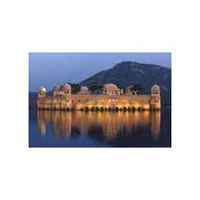 7D/6N
7D/6N
 6D/5N
6D/5N
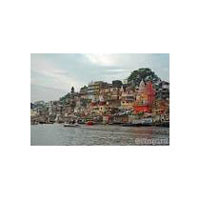 9D/8N
9D/8N
Bodhgaya - Nalanda - Rajgir - Patna - Vaishali - Sravasti - Varanasi - Kapilvastu -..
 10D/9N
10D/9N
 7D/6N
7D/6N
 25D/24N
25D/24N
Mumbai - Nashik - Varanasi - Bijapur - Badami - Hampi - Hassan - Mysore - Mettupala..
 6D/5N
6D/5N
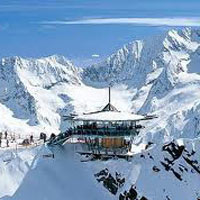 5D/4N
5D/4N
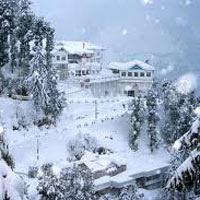 7D/6N
7D/6N
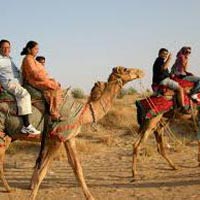 12D/11N
12D/11N
Camel Safari in Rajasthan Tour
New Delhi - Jodhpur - Jaisalmer - Ranakpur - Udaipur
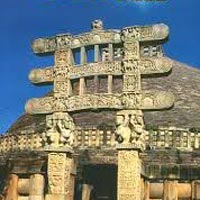 12D/11N
12D/11N
Back to Madhya Pradesh Tour (Central Ind..
Gwalior - Jhansi - Jabalpur - Bhopal - Tikamgarh - Chhatarpur - Kanha - Pachmarhi
 12D/11N
12D/11N
 12D/11N
12D/11N
Chardham Yatra (Ex Delhi) 11 Nights / 12..
Haridwar - Garhwal - Uttarkashi - Rudraprayag - Chamoli - Rishikesh
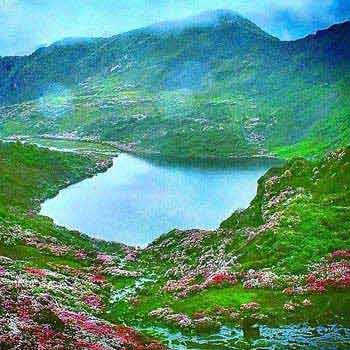 12D/11N
12D/11N
Guwahati - Kaziranga - Shillong - Tawang - Cherrapunji - Bomdila - Bhalukpong
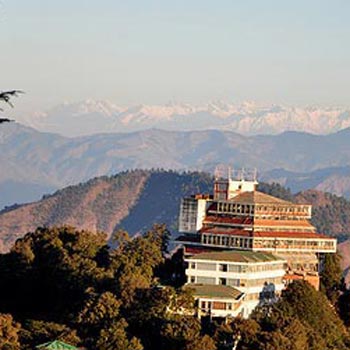 12D/11N
12D/11N
11nights/12days Himachal Punjab Romantic..
Chandigarh City - Shimla - Manali - Dharamshala - Dalhousie - Amritsar - Ludhiana -..
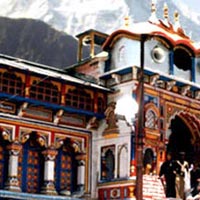 12D/11N
12D/11N
Haridwar - Rishikesh - Uttarkashi - Rudraprayag - Chamoli - Joshimath - Srinagar - ..
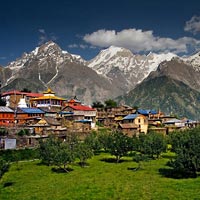 12D/11N
12D/11N
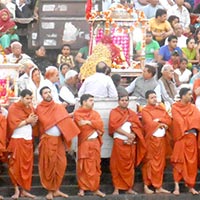 12D/11N
12D/11N
Haridwar - Rudraprayag - Rishikesh - Uttarkashi - Chamoli - Gangotri
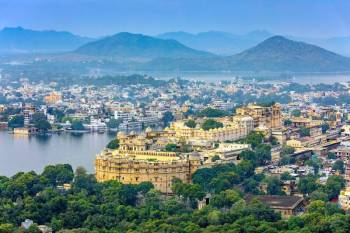 12D/11N
12D/11N
11 Nights 12 Days - Delhi Agra Rajasthan
New Delhi - Mathura - Agra - Jaipur - Ajmer - Pushkar - Udaipur - Mount Abu - Ranak..
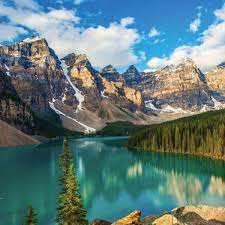 11D/10N
11D/10N
Himachal Pradesh Tour Package 10 Night -..
Dalhousie - Khajjiar - Kufri - Manali - Shimla - Dharamshala - Amritsar - Mcleodganj
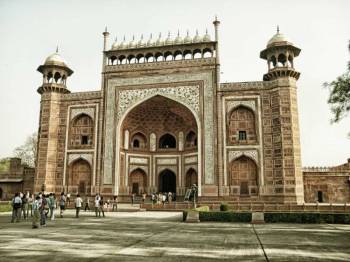 11D/10N
11D/10N
10 Nights Uttar Pradesh Tour Package Fro..
New Delhi - Agra - Prayagraj - Lucknow - Mathura - Varanasi - Ayodhya - Vrindavan -..
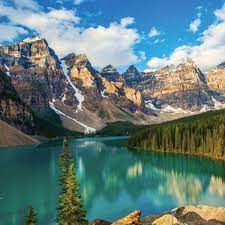 11D/10N
11D/10N
Himachal Pradesh Tour Package 10 Night -..
Dalhousie - Khajjiar - Kufri - Manali - Shimla - Dharamshala - Amritsar - Mcleodganj
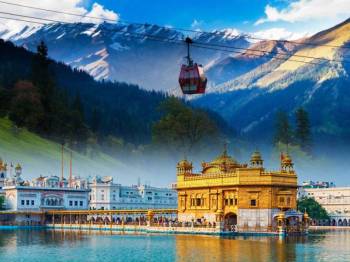 11D/10N
11D/10N
10Night Himachal Pradesh Tour Ex - Shimla
Dalhousie - Khajjiar - Kufri - Manali - Shimla - Dharamshala - Amritsar - Mcleodganj
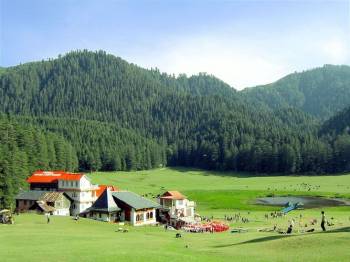 10D/9N
10D/9N
9 Night - 10 Days Himachal Pradesh Tour ..
Dalhousie - Khajjiar - Kufri - Kullu - Manali - Shimla - Dharamshala - Amritsar - M..
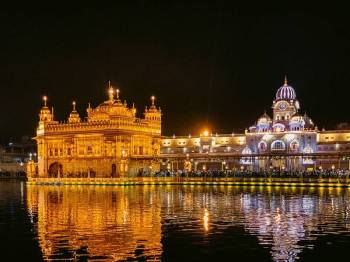 10D/9N
10D/9N
9 Night 10 Days Jammu And Kashmir With V..
Jammu - Katra - Patnitop - Srinagar - Amritsar - Pahalgam - Sonamarg - Gulmarg
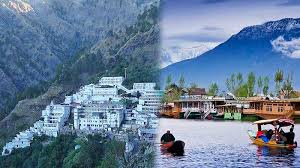 10D/9N
10D/9N
Jammu - Kashmir With Vaishno Devi-Amrits..
Jammu - Katra - Patnitop - Srinagar - Amritsar - Sonamarg - Gulmarg
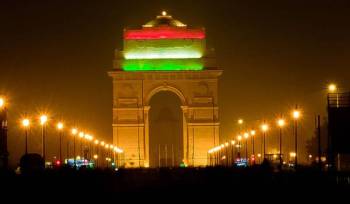 5D/4N
5D/4N
Delhi - Mathura - Vrindavan - Agra Tour ..
New Delhi - Agra - Mathura - Vrindavan